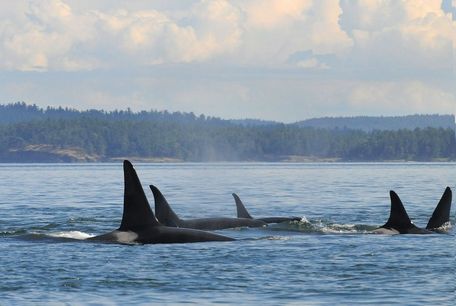By Gale Fiege, The Herald
Winter is bald eagle time along the Stillaguamish River.
The return of our national bird is celebrated annually by the city of Arlington with the Arlington-Stillaguamish Eagle Festival.
This year’s event on Friday and Saturday includes walks along the river, fish printing, an obstacle course, crafts and a visit from Predators Of The Heart Wild Animal Show.
Jim Jacobson of Calvary Arlington, the church sponsoring the animal show, said the animals include reptiles, a skunk, a porcupine, birds of prey, a wolf and a mountain lion.
“The Eagle Festival is a great family event,” Jacobson said. “Last year we drew a huge crowd for Predators.”
This wild animal encounter is educational and entertaining and is scheduled twice on Saturday, 1 p.m. and 3 p.m., at Eagle Creek Elementary, 1216 E. Fifth St. in Arlington.
The seventh annual festival also includes:
Eagle watching expedition at 9 a.m. Saturday from Haller Park, 1100 West Ave. The city’s natural resource manager Bill Blake will lead a short walk through Arlington’s innovative Stormwater Wetland Park and down the Eagle Trail along the Stillaguamish River. Blake plans to describe how the wetland benefits the river and will help find eagles in the cottonwood trees.
Eagles at the estuary from 10 a.m. to noon Saturday. Wildlife biologists will offer tours at the Nature Conservancy’s property on Port Susan, at the mouth of the Stillaguamish River. People can look through binoculars and a spotting scope to get a close up look at the eagles. To get there from Arlington, take Highway 530 west through Silvana. Turn left on Norman Road, cross over Marine Drive and follow out to the end of Boe Road.
For a close-up look at a bald eagle and other raptors, see the Sarvey Wildlife display from noon to 4 p.m. Saturday in the Arlington City Council chambers. Also there, from 11 a.m. to 4 p.m., nature exhibits will be provided by Western Wildlife Outreach, Sound Salmon Solutions, Pilchuck Audubon Society and Snohomish Conservation District.
A salmon obstacle course for kids to navigate will be set up in Legion Park. Displays of tractors will be in the City Hall parking lot.
Upstairs at City Hall, people can make fish prints and spin the “Salmon Wheel of Fortune” at the Stillaguamish Salmon Stop, presented by the Stillaguamish Tribe Natural Resources Department.
Hands-on craft projects for kids are made available by Arlington Arts Council’s Youth Engaged in Art Committee from 11 a.m. to 3 p.m. at Arlington United Church, 101 E. Fourth St. The church also plans a soup and bake sale lunch.
The Arlington Arts Council offers a show of Northwest flora and fauna depicted by local artists. The show opening — with hors d’oeuvres, wine and a concert featuring bird-related compositions by the five horns of Brass Menagerie — is 5:30 to 7:30 tonight, Jan. 31, at Magnolia Hall, 102 E. Third St. The art show — “Rock, Paper, Scissors” — continues from 10 a.m. to 5 p.m. Saturday. Entries from the festival photo and haiku poetry contests are to be displayed. Textile are will be displayed in the lower level of Magnolia Hall. See demonstrations of spinning wheels, quilt-making, loop-hooking and a display of dolls by the Dollirious Doll Club. In addition, Marysville Rock and Gem Club will display rocks, gems, and petrified wood. Members of the Gold-N-Gem Prospecting Association will demonstrate gold panning.
Chainsaw carvers will be on hand and working from 9 a.m. to 5 p.m. Friday and Saturday in Legion Park, 102 N. Olympic Ave. Artists from across the Northwest, including well-known carver Jake Lucas, will be carving eagles, bears and many other figures. An auction at 3 p.m. Saturday helps fund the event.



